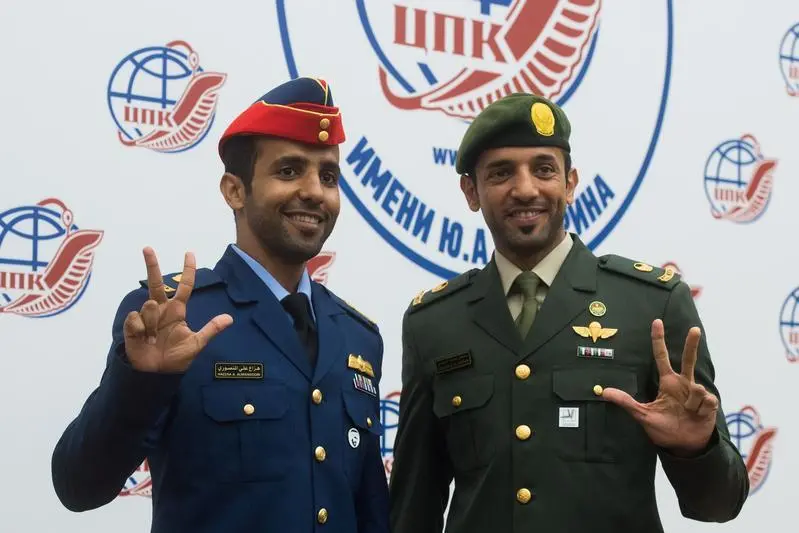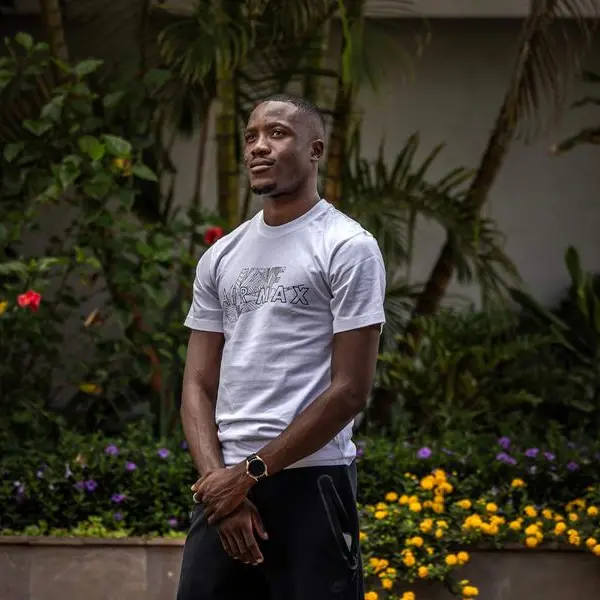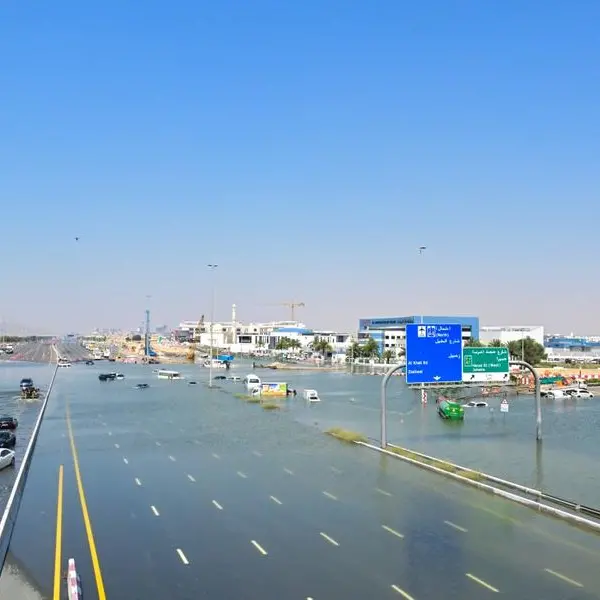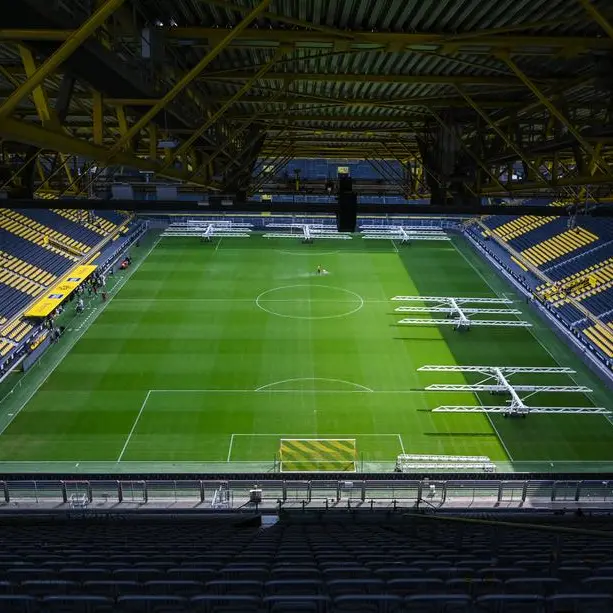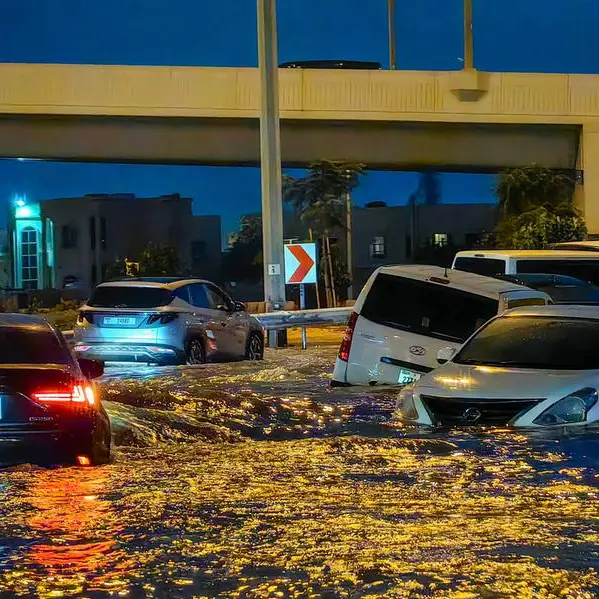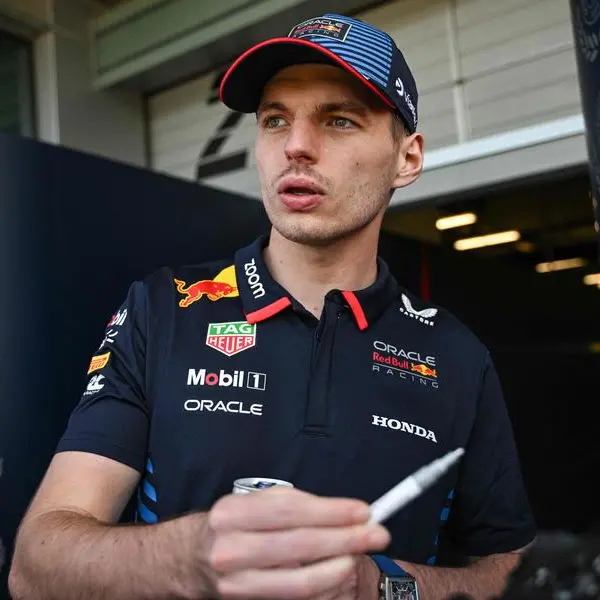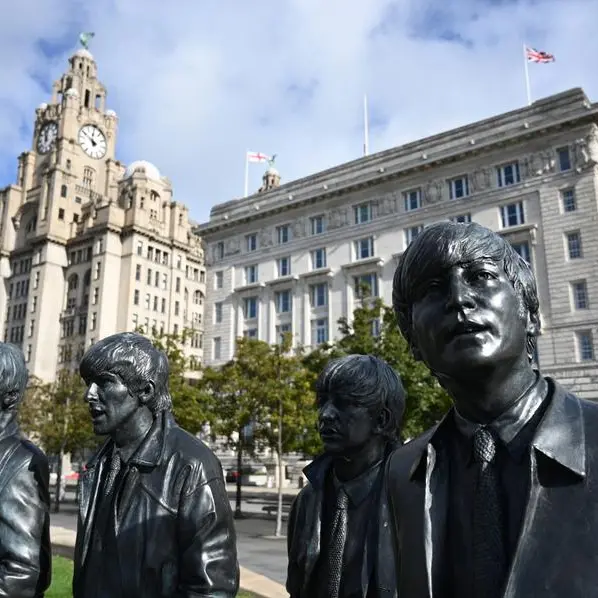PHOTO
Hazza Al Mansoori, a former F-16 fighter pilot, will take the same flag - made of 100 per cent silk - to the space station on September 25. He will become the first Emirati in space and the first Arab to reach the ISS.
Al Mansoori arrived in Baikonur, Kazakhstan, with his crew, American astronaut Jessica Meir and Russian commander Oleg Skripochka, on September 10.
They will remain in quarantine until liftoff time. They had been undergoing their final few health checks and tried on their Sokol space suits. For the first time, they also sat inside their Soyuz spacecraft, a small three-seater where they'll spend six hours in as the launcher takes off from the Baikonur Cosmodrome to the ISS at an orbital speed of 28,800kph.
Even though the launch is now just a blink of an eye away, the journey to get at this point has not been easy for Al Mansoori, his back-up Sultan Al Neyadi, or the Mohammed Bin Rashid Space Centre (MBRSC), the entity behind the UAE Astronaut Programme.
Khaleej Times explores some of the key challenges, achievements and joyous moments the astronaut and his support team have faced during this journey.
Picking the date of historic launchGetting a seat on Russia's Soyuz spacecraft is not easy, to say the least.
Nasa pays more than $90 million per seat, as Russia has the only launcher and spacecraft that can take humans to the ISS.
Khaleej Times had revealed that the UAE got a "very good deal" to send its first Emirati to the ISS, as Russia and the UAE have strong relations. However, both the MBRSC and Roscosmos remain tight-lipped on the exact price paid. The package includes training the astronaut, allowing him or her to use their facilities on ground and on the ISS, and a seat on the Soyuz.
On October 11, 2018, officials from the MBRSC were in Baikonur to sign the contract with Russia, which would allow the first Emirati astronaut to jet off to space on the Soyuz MS-12 mission taking place on April 5, 2019.
About an hour after signing the contract, the Soyuz MS-10 mission that was lifting off on the same day experienced a failure and made a ballistic re-entry back into earth.
An incident as such had never occurred since the 1980s and put all future missions into question.
"The rocket exploded and they came back. In that one minute and half, they travelled about 500km away from the launch space," the assistant director-general of the MBRSC, Salem Al Marri, had said in March this year.
"So, imagine, you've signed your contract and an hour later, you've seen that. That's a big challenge." The UAE space mission was reassigned to the Soyuz MS-15 as Roscosmos had to reschedule the upcoming launches.
Choosing Hazza
More than 4,000 Emiratis had applied to become astronauts when the MBRSC had launched the UAE Astronaut Programme by the end of 2017. But the one who stood out most from day one was Al Mansoori - a 34-year-old military fighter jet pilot, who has been dreaming of going to space since he was a child.
"I used to love astronomy when I was young. I used to ask myself 'can I be an astronaut one day?' So, when I received the call, I couldn't believe it," Al Mansoori had told Khaleej Times earlier this year.
His years of experience of being a military pilot, his outstanding health, and his in-depth knowledge of space made him a standout candidate.
The selection round included rigorous psychological and medical exams - sitting in a rotating chair for 10-15 minutes daily to familiarise the body with motion sickness; laying on titling tables to measure blood flow to the brain; and being lifted high into the air to see how a human's body reacts to hypoxia.
Dr Irina Konovalova, the functional diagnosis lead at a Russian training facility for astronauts, said Al Mansoori was the first candidate from the UAE Astronaut Programme to pass the critical 'rotating chair' test.
On April 12, Al Mansoori was announced as the primary candidate and Sultan Al Neyadi as his back-up.
Passing Russia's tough training
Al Mansoori and Al Neyadi had been living in Russia's Star City since September 2018. It's the accommodation for astronauts with upcoming missions. It's where they train, as well as undergo medical examinations.
The toughest training experience for both the astronauts were during the winter time, when they had to spend several days out in the snow, carrying out survival tasks in case they had to make an emergency landing at a place with extreme, unpredictable weather.
Both of them also experienced 8Gs - eight times of the gravitational force - while spinning around on the Centrifuge machine. They are strapped into a harness and swung around at a very fast speed, with 8Gs pushing against their bodies. They underwent this test several times a month during their year-long training.
They took their final exam on August 30 and 31 and received an 'excellent' mark from Rosmoscos, which meant they are qualified and ready for a space mission.
Both of them were also required to learn to speak, read and write in Russian as the controls of the Soyuz spacecraft are in Russian.
During a Press conference in Moscow, held after they passed their exam, Al Mansoori was asked by a Roscosmos official to address the media in Russian to show his readiness for the journey.
He impressed the crowd with his fluent Russian.
Copyright © 2019 Khaleej Times. All Rights Reserved. Provided by SyndiGate Media Inc. (Syndigate.info).
